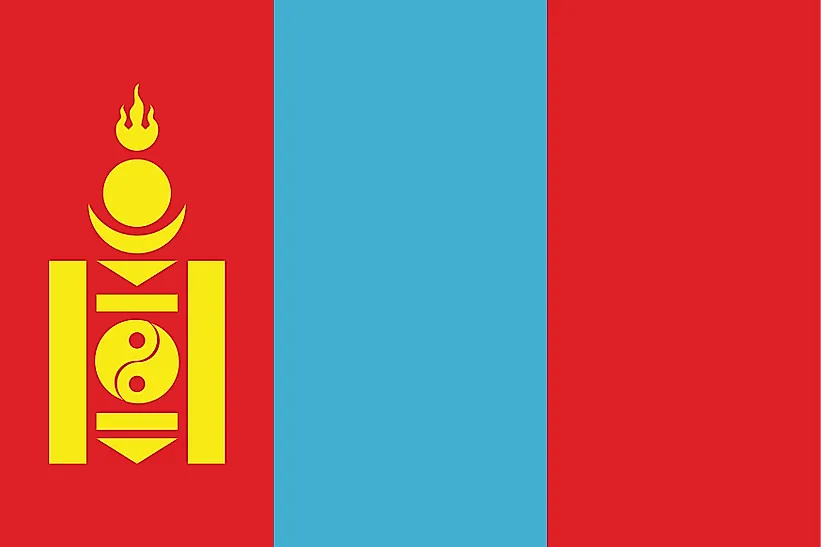
モンゴル
| 大陸 | アジア |
| 資本金 | ウランバートル |
| 人口 | 3,031,330 |
| GDP | $37億円 |
| 一人当たりGDP | $12,200 |
| ダイヤルコード | +976 |
| ISOコード(2文字) | MN |
| ISOコード(3文字) | MNG |
モンゴルの風景






モンゴルについて
広大な草原と古くからの伝統が出会う国、モンゴルへようこそ。約156万平方キロメートルに約330万人が暮らすモンゴルは、遊牧民の伝統と近代的な発展を併せ持ち、世界で最も人口の少ない主権国家です。
地理的特徴と自然の美しさ
モンゴルの地理は、南のゴビ砂漠から西のアルタイ山脈まで、驚くほど多様性に富んでいる。広大な草原、北部のタイガの森、多様な生態系を形成する数多くの湖や川がある。
その景観には、神聖なボグド・ハーン山、手つかずの自然が残るホブスゴル湖、ドラマチックなゴビの火焔崖などがある。この国の大陸性気候は極端な温度差を生み、野生生物と人間のライフスタイルの両面でユニークな適応を支えている。
保護地域には、ゴルキ・テレルジ国立公園、大ゴビ厳正保護地域、ユキヒョウやプシェバルスキー馬などの絶滅危惧種を保護するさまざまな自然保護区がある。同国の環境保護への取り組みは、広大な原生地域の保護に重点が置かれている。
文化遺産と伝統
モンゴルの文化は、チンギス・ハーンの時代にまで遡る豊かな遊牧民の遺産を象徴している。モンゴルの伝統には、喉歌(khöömei)を特徴とする独特の音楽、レスリングやアーチェリーなどの伝統スポーツ、象徴的なゲル(ユルト)住居などがある。
伝統芸術には、複雑な刺繍、フェルト作り、金属細工などがある。音楽の伝統にはモリン・クール(馬頭琴)や長唄があり、ナーダム(ナーダム)のような祭りは古くからのスポーツの伝統を祝うものである。
モンゴル料理は遊牧民の生活を反映したもので、ブズ(餃子)、アイラグ(雌馬の乳を発酵させたもの)、さまざまな肉料理などがある。おもてなしの伝統と自然への敬意は、今も文化的アイデンティティの中心となっている。
歴史の旅
モンゴルの歴史は、古代の遊牧文明から世界最大の連続した帝国を経て、現代の独立にまで及んでいる。モンゴルの領土は、いくつかの遊牧民帝国の中心地であった。
重要な時代には、チンギスハーン帝国の勃興、仏教の影響、満州族の支配、1921年の独立、社会主義時代、1990年の民主化移行などがある。この国の歴史的遺産は、今も国民性に影響を与え続けている。
現代の経済状況
今日のモンゴル経済は、伝統的な牧畜業と鉱業や新興産業が融合している。モンゴルには銅、石炭、金などの膨大な鉱物資源がある。
最近の取り組みでは、持続可能な鉱業、インフラ整備、観光業に力を入れている。ロシアと中国の間に位置するモンゴルの戦略的立地は、経済発展の機会を提供している。
国際関係とグローバルポジション
モンゴルは、「第三の隣国」政策による外交の多様化を進めながら、国際機関への積極的な参加を維持している。モンゴルの民主主義の発展と戦略的立地が国際関係に影響を与えている。
ご存知でしたか?
- モンゴルでは、国民一人当たりの馬の数が他のどの国よりも多いのですか?
- ゴビ砂漠は、地球上で最も極端な温度変化を経験する場所なのですか?
- ウランバートルは世界一寒い首都?
- この国は今でも西部地域でワシ狩りを伝統的に行っているのか?
結論
モンゴルは遊牧民の伝統と現代的な願望が融合したユニークな国である。広大な草原から発展する都市まで、古くからの伝統から発展する経済まで、モンゴルは独自の文化的アイデンティティを守りながら進化し続けている。持続可能な開発や都市化などの課題に取り組む中で、モンゴルは環境保全を促進しながら、東洋と西洋の架け橋としての役割を果たすことを約束し続けている。